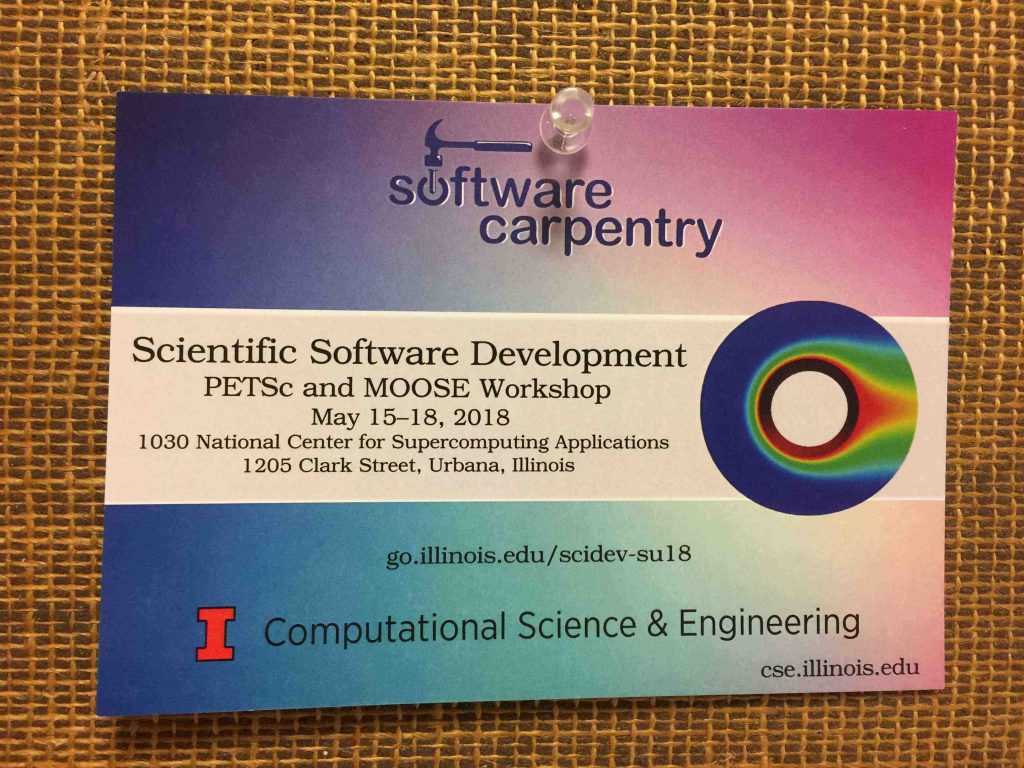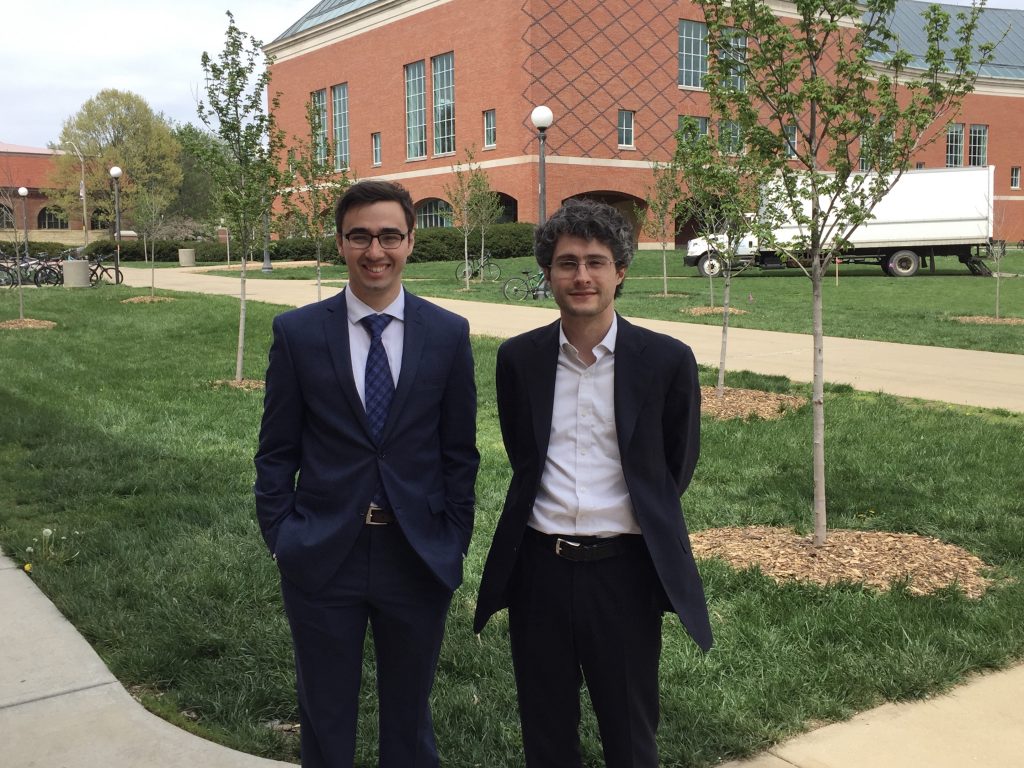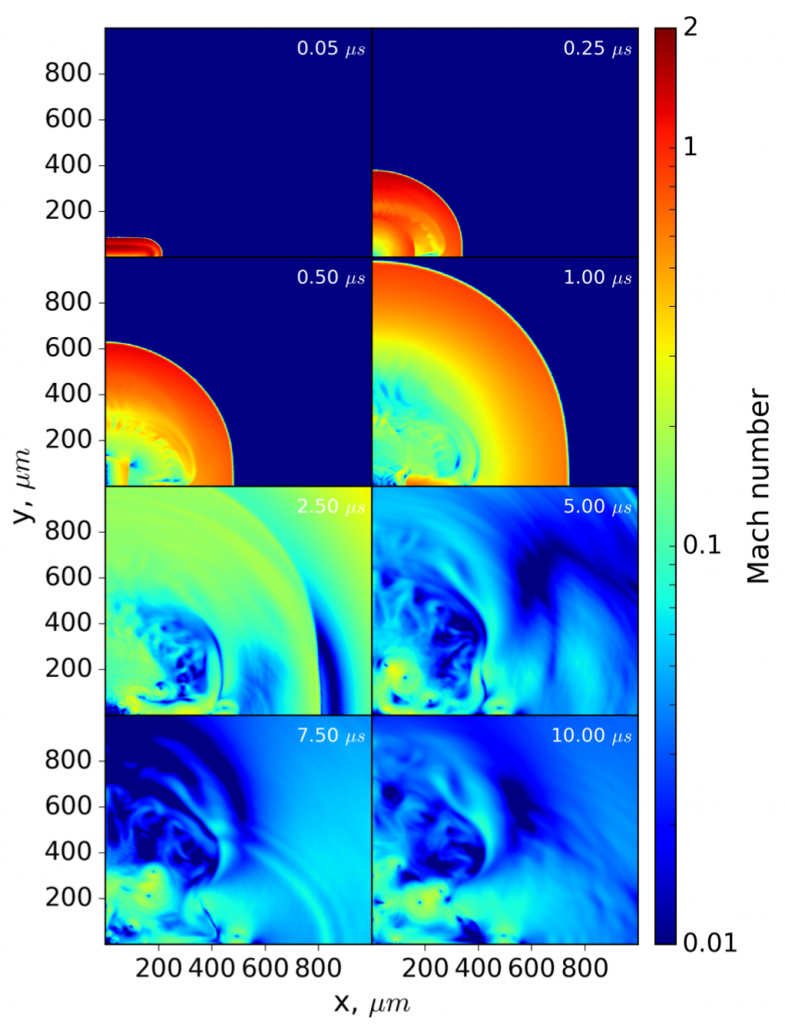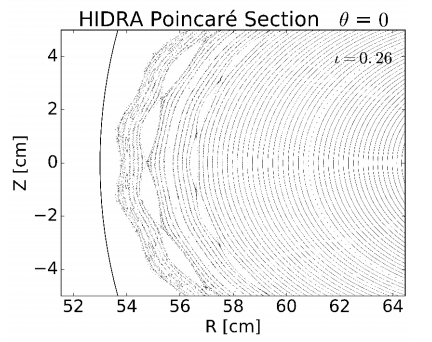May 22-23, 2018 DOD – DTRA Nuclear Fireball Plasma Chemistry Technical Interchange Meeting, Lorton, VA
Laboratory of Computational Plasma Physics
May 22-23, 2018 DOD – DTRA Nuclear Fireball Plasma Chemistry Technical Interchange Meeting, Lorton, VA

Rinat Khaziev, PhD Candidate
Professor Davide Curreli, Advisor
Friday, May 4, 2018 1:00 PM
 ABSTRACT: Understanding the physics of the plasma boundary and plasma-surface interactions is one of the key scientific challenges in fusion science and engineering. Large-scale integrated simulations and high-performance computing can provide valuable insights on the dynamic phenomena involved at the interface between the plasma and the material surface. Current state-of-the-art simulations of magnetically-confined fusion devices are typically performed using gyrokinetic approximations, aimed at resolving the physics of the core plasma, scrape-of-layer, and a portion of the divertor. However, the region of plasma near to the surface, called the plasma sheath, where the plasma ions accelerate from subsonic to supersonic conditions, is typically either not handled or treated with ad-hoc approximations. The characteristic scale of the near-surface plasma (sheath and presheath) is comparable to the Debye length, which is of the order of, or smaller, than the ion gyroradius. A detailed description of the kinetic processes occurring during the supersonic acceleration across the collisional and magnetic presheaths and requires a fully-kinetic model that is not present in any current fusion code, thus limiting a detailed evaluation of the energy-angle spectrum of the ions impacting on the surface of a tokamak.
ABSTRACT: Understanding the physics of the plasma boundary and plasma-surface interactions is one of the key scientific challenges in fusion science and engineering. Large-scale integrated simulations and high-performance computing can provide valuable insights on the dynamic phenomena involved at the interface between the plasma and the material surface. Current state-of-the-art simulations of magnetically-confined fusion devices are typically performed using gyrokinetic approximations, aimed at resolving the physics of the core plasma, scrape-of-layer, and a portion of the divertor. However, the region of plasma near to the surface, called the plasma sheath, where the plasma ions accelerate from subsonic to supersonic conditions, is typically either not handled or treated with ad-hoc approximations. The characteristic scale of the near-surface plasma (sheath and presheath) is comparable to the Debye length, which is of the order of, or smaller, than the ion gyroradius. A detailed description of the kinetic processes occurring during the supersonic acceleration across the collisional and magnetic presheaths and requires a fully-kinetic model that is not present in any current fusion code, thus limiting a detailed evaluation of the energy-angle spectrum of the ions impacting on the surface of a tokamak.
We have developed and verified a new massively-parallel Particle-in-Cell code, named hPIC, solving the multi-species Boltzmann-Poisson integro-differential set of equations. We give an overview of the model equations, of the architecture of the code, and summarize the verification tests, also presenting the scalability tests performed on the Blue Waters supercomputer at the University of Illinois. The model has been used for the numerical characterization of the plasma sheath and presheath in strong magnetic fields. Thanks to the new Particle-in-Cell, we have performed a systematic analysis of the structure of the magnetized plasma sheath, in order to determine the trends of the Ion Energy-Angle Distributions (IEAD) of the particles impacting on the wall after crossing the presheath and sheath regions. The model provides the dependance of the IEAD on the level of magnetization and magnetic inclination with respect to the surface. We have found that in regimes of intermediate-to-strong magnetization, the ion flow has a characteristic three-dimensional structure, which appears in all evidence within the magnetic presheath after the ions transition from sonic to supersonic. The model also suggests the disappearance of the electrostatic (Debye) sheath at high magnetic angles, with an interesting reduction of the ion flow down to subsonic conditions. Furthermore, detailed Particle-in-Cell simulations have been compared to simplified representations of the magnetized plasma sheath based on a set of fluid equations coupled to a Monte-Carlo particle-tracer for the reconstruction of the Ion Energy-Angle Distributions (IEAD) of the particles impacting on the wall, finding qualitative agreement and suggesting strategies of model reduction which could be used in Whole-Device Modeling.
Finally, the model of the magnetic and collisional presheath has been validated against three-dimensional tomographic Laser-Induced Fluorescence measurements taken at the HELIX helicon facility at WVU. Our analysis highlights the role of neutral gas pressure, background neutral flow, and ambient electric field on the structure of the collisional and magnetic presheath, finding absolute quantitative agreement between our calculated data and experimental measurements. In particular, the work gives clear evidence of the three-dimensional structure of the magnetized plasma sheath, a unique feature not present in the classical thermal sheath in unmagnetized conditions.
See where Rinat Khaziev is now: LinkedIn
04/24/2018 Mikhail Finko’s MS Thesis, titled “A kinetic transport model of uranium molecular species formation in a laser ablated plasma plume“, has been deposited. Congrats Mikhail!


http://www.sciencemag.org/news/2018/03/science-department-energy-gets-hefty-raise-final-2018-budget
“The Office of Science comprises six distinct research programs, and four would see their funding grow by double-digit percentages. The biggest winners would be advanced scientific computing research, which supports DOE’s supercomputing efforts, and fusion energy sciences, which supports effort to harness nuclear fusion as a source of energy. The computing budget would soar 25%, to $605 million, and fusion would receive a 24% increase, to $410 million.”
NPRE 199 Undergraduate Seminar – D. Curreli, Assistant Professor
Department of Nuclear, Plasma, and Radiological Engineering
University of Illinois at Urbana-Champaign
Tuesday, January 23, 2018
12:00 – 12:50 p.m.
112 Transportation Building
Abstract: This talk gives an overview of the most recent research activities at LCPP, the Laboratory of Computational Plasma Physics at Illinois. The Laboratory develops theoretical and computational models for a variety of Plasma Physics problems ranging from fusion edge plasmas to industrial plasmas and nuclear forensics, utilizing advanced, predictive simulation capabilities on high-performance computing machines, and multi-physics multi-scale models. Five-minute snapshots from several active projects will be presented, highlighting collaboration opportunities for graduate and undergraduate students.
12/13/2017 Jon Drobny’s MS Thesis, titled “F-TRIDYN: A Monte-Carlo, BCA code for modeling ion-surface interactions with rough materials and coupling plasma and material codes”, has been deposited. Congrats Jon!
12/5/2017 Steven Marcinko’s MS Thesis, titled “Three-dimensional modeling of plasma transport in the HIDRA stellarator“ is now available on IDEALS at the following web address: http://hdl.handle.net/2142/97506 Congrats Steven!


Plasma modeling innovation holds promise for sustainable food, energy, water nexus